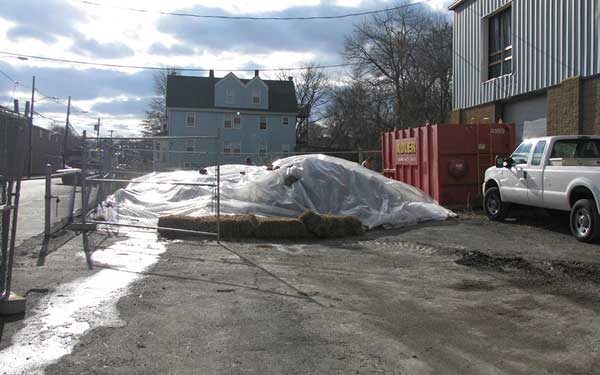Adequate preparation through contingency plans is essential to minimize negative impacts and ensure operational continuity. Therefore, we will explore what is a contingency plan, what it should include, who is responsible for its preparation and why it is essential for companies.
It is important to remember that hurricane season represents a significant challenge for businesses, especially those located in regions prone to these natural phenomena such as Puerto Rico.
What is a Contingency Plan
A Contingency Plan is a strategy designed to anticipate and manage emergency situations or unexpected interruptions in critical operations. It includes aspects such as risk identification, assignment of responsibilities, necessary resources and communication protocols.
Essential Components of a Hurricane Contingency Plan
An effective contingency plan must be comprehensive and specific to the needs of the business.

Key components include:
- Risk and Vulnerability Assessment. Identifying the specific risks associated with hurricanes is the first step. This includes assessing the physical infrastructure, geographic location, and vulnerability of information technology systems.
- Development of Response Protocols. Clear procedures should be established for pre-hurricane preparedness, response during the event, and post-event recovery. This ranges from facility and equipment protection to personnel safety.
- Communication Plans. It is crucial to maintain effective communication with employees, suppliers and customers. The plan should include alternative methods of communication in the event of failure of traditional systems.
- Resource Allocation. Provision of essential supplies, such as water, food and first aid kits, is critical. It is also important to have agreements with external suppliers for the continuous supply of critical resources for the uninterrupted operation of the activities, such as the supply of diesel fuel and lubricants for generators and equipment.
- Training and Drills. Employees should be properly trained in their roles within the contingency plan. Periodic drills ensure that everyone knows their responsibilities and can act efficiently.
- Disaster Recovery Plan (DRP). This plan should include strategies for restoring data, repairing infrastructure and resuming business operations as quickly as possible, which also involves reactivating the supply of fuels and lubricants, as well as specialized products, in order to resume activities. In addition, the technical review of equipment that may have been damaged during the emergency must be considered, ensuring its proper functioning and avoiding additional interruptions in operations.
- Adequate insurance. Having insurance policies that cover hurricane damage is vital. Companies should review their coverage regularly and ensure that it is sufficient to cover possible losses.
Responsibility in the preparation of the Contingency Plan

The creation of a contingency plan should be a collaborative effort involving various levels of the organization:
- Senior Management. The ultimate responsibility lies with senior management. They must ensure that the necessary resources are available and that priority is given to hurricane preparedness.
- Risk Management Teams. These teams are responsible for risk identification and plan development. Their job includes coordinating with all departments to ensure that the plan covers all areas of the company.
- IT and Human Resources Departments. The IT and Human Resources departments play crucial roles in protecting data, creating backup and recovery systems, as well as communicating with employees and organizing training and drills.
- General Staff. All employees should be aware of the contingency plan and their specific roles. Active participation and staff engagement are crucial to the effectiveness of the plan.
- Suppliers and Allies. It is critical that suppliers and strategic allies, such as American Petroleum, are an integral part of your contingency plan in both a preventive and proactive manner. During an emergency, having the support of reliable suppliers can make the difference between continuity and interruption of your business operations.
American Petroleum’s Role in Your Contingency Plan
At American Petroleum, we understand how important hurricane season preparation is to your company’s survival. That’s why we take care of all the details related to fuel supply, so you don’t have to.
By including American Petroleum in your contingency plan, you can manage a steady supply of fuel and lubricants for your generators and critical equipment. In addition, by establishing a proactive partnership with American Petroleum, you can anticipate needs during a crisis and ensure a quick and effective response.
In emergencies, American Petroleum will prioritise critical sectors, which may affect other delivery times. Customers with current accounts who have requested fuel in advance will be served on a first-come, first-served basis, subject to priority. We are not responsible for delays due to circumstances beyond our control. We recommend anticipating emergencies. For more information, please contact us. Thank you for your cooperation and support in this matter.
